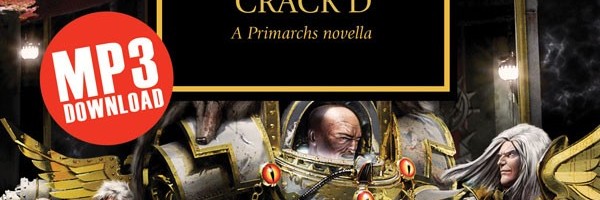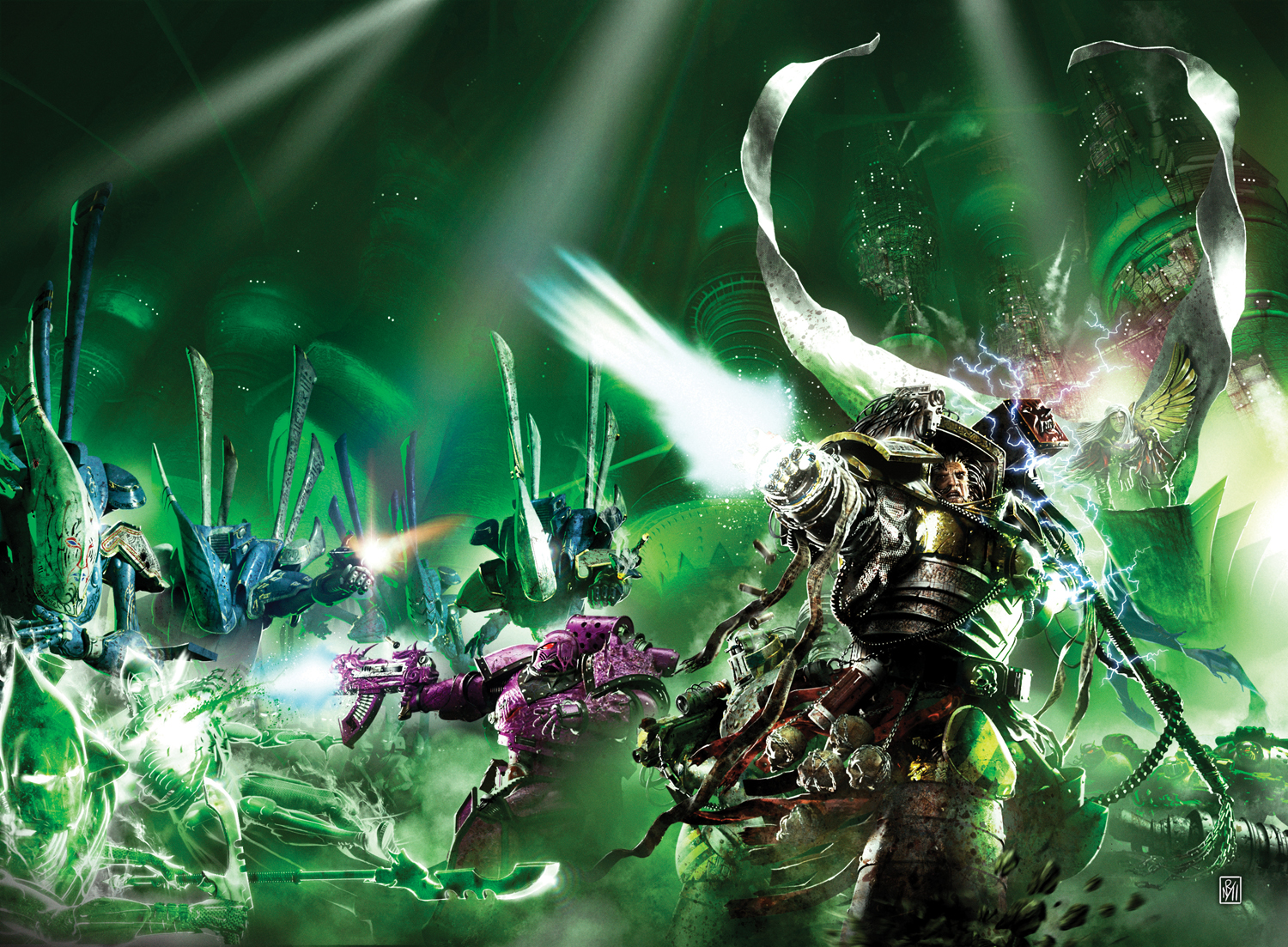
While the Emperor’s Children descend into debauchery, Fulgrim’s closest allies plot against him to purge the Legion of the daemonic influence which has begun to plague their ranks.
Writer’s Commentary
The Primarchs was an anthology of four novellas that, unsurprisingly, told four tales of those numinous, semi-mythical beings known as the Primarchs. I’d be sharing page space with Gav Thorpe, Nick Kyme and Rob Sanders. I had an idea for a story I wasn’t sure ought to be part of a novel, but which was too long for a short story (even one of mine!).
I chose to write about Fulgrim, as I’d left him in a nasty place at the end of the novel of the same name, and had ideas for what I wanted to do with him in a following novel. But that required him to start that novel at a certain place, and if I didn’t want to take the first third of the book getting him there, I’d need to find another home for those elements. The Primarchs was that place.
Now, if you remember, Fulgrim had been left trapped in the painting of Serena D’Angelus and hung in La Fenice. I loved the idea of his captains finally getting the idea that there was something not quite right about their primarch, that he was somehow…different. From that came the idea that they eventually figured out that he wasn’t who he said he was and hatched their plan to free him from possession. Of course, things weren’t as simple as that, and the idea of them torturing their primarch with a view to casting out the daemon within him – only to find out that it was long gone – was one that gave me a smile of wickedness to match any of Fulgrim’s.
It also gave me the chance to set up some threads for Angel Exterminatus and to link with Nick’s story, Feat of Iron. Any excuse to cross-pollinate with other stories is always a good idea, as the connective tissue that exists between them gives a great sense of a living, breathing world. Events don’t happen in isolation, they have consequences. Characters don’t just sit around waiting for their next novel, they’re off doing things and getting involved in their own stories.
But mostly it was a chance to show the degeneration of the Emperor’s Children from the point of view of Lucius the Swordsman – the one man you’d expect to fall the fastest into depravity, but who, perversely, is the one who most closely holds onto the old Legion ways. At the end of the novel, Fulgrim, they’d fallen pretty far, this was a chance to show how badly that degeneration had gone and how the self-involvement of each follower of the Dark Prince (though the thought that they might be followers of anything other than Fulgrim would have horrified them at this point!) was still relatively unknown to them. The Emperor’s Children were falling prey to the rampant egotism and narcissism that is the hallmark of Slaanesh, which at this point is still manifested in obvious ways of flesh and biology as the Emperors Children haven’t yet got the experience to succumb to the power of excess fully. As time goes on and they tire of the obvious gratifications of flesh, they’ll move on to ever more complex forms of indulgence.
Once I’d submitted the story, there was a bit I was told would need to be cut for reasons of its…graphic nature. I was okay with this, and suspected that might be a contentious moment anyway. But it’s always better to push hard against boundaries in the first draft and then maybe pull back than not push hard enough first time out the gate. That way lies blandness. But, anyway, after agreeing to take the moment out, imagine my surprise when I saw it was still there in the finished copy. And if you want to know which bit I’m talking about, just bear in mind the word Pear.
The title came, not from the Agatha Christie novel, but the poem The Lady of Shallot, by Alfred, Lord Tennyson, as I thought the imagery of the Lady looking out and seeing the world only as shadows was a perfect metaphor for how the Emperor’s Children now saw their previous existence. Rather than the ‘mirror crack’d’ as it is in the poem, it was what they now saw in it that was flawed…
